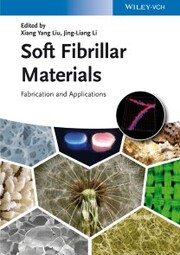Detailansicht
Soft Fibrillar Materials
eBook - Fabrication and Applications
ISBN/EAN: 9783527648061
Umbreit-Nr.: 5548933
Sprache:
Englisch
Umfang: 320 S., 22.35 MB
Format in cm:
Einband:
Keine Angabe
Erschienen am 06.08.2013
Auflage: 2/2013
E-Book
Format: EPUB
DRM: Adobe DRM
- Zusatztext
- <p>As one of the most important classes of soft materials, supramolecular materials are of a mixture of networks of molecular chains/fibrils and a liquid. These self-assembled fibrous/ molecular architectures exhibit various functionalities, ie. superhydrophobicity or superior mechanical strength, etc. and consist of the controllable structures.<br /><br />They can be functioned via micro/nano engineering, to have some particular added functions, ie. emission materials, tissue engineering scaffolds, bio imaging and sensing materials etc. They have therefore found broad applications in photography, cosmetics, food and petroleum industries and not the least in the biomedical sector where there is strong interest in these materials as drug delivery agents.<br /><br />The book covers the most important soft functional materials, including small molecule physical gels, silkworm silk and spider silk fibers and functional fibers, with respect both to the fundamentals and to development and engineering methods. It provides the reader with the necessary knowledge on the chemical and physical formation mechanisms of these materials and demonstrates that one can rationally design and tune the fibrillar networks so that the resulting materials exhibit the desired functionalities.<br /><br />This work is a must-have for all Materials Scientists, Polymer Chemists, Condensed Matter Physicists, and Biotechnologists working in this interdisciplinary field.</p>
- Kurztext
- As one of the most important classes of soft materials, supramolecular materials are of a mixture of networks of molecular chains/fibrils and a liquid. These self-assembled fibrous/ molecular architectures exhibit various functionalities, ie. superhydrophobicity or superior mechanical strength, etc. and consist of the controllable structures. They can be functioned via micro/nano engineering, to have some particular added functions, ie. emission materials, tissue engineering scaffolds, bio imaging and sensing materials etc. They have therefore found broad applications in photography, cosmetics, food and petroleum industries and not the least in the biomedical sector where there is strong interest in these materials as drug delivery agents.The book covers the most important soft functional materials, including small molecule physical gels, silkworm silk and spider silk fibers and functional fibers, with respect both to the fundamentals and to development and engineering methods. It provides the reader with the necessary knowledge on the chemical and physical formation mechanisms of these materials and demonstrates that one can rationally design and tune the fibrillar networks so that the resulting materials exhibit the desired functionalities.This work is a must-have for all Materials Scientists, Polymer Chemists, Condensed Matter Physicists, and Biotechnologists working in this interdisciplinary field.
- Autorenportrait
- <b>Jing Liang Li</b> is a research academic in the Institute for Technology, Research and Innovation, at Deakin University, Australia. He got his PhD in Chemical Engineering from the National University of Singapore in 2004. Before moving to Australia, he worked as a research fellow in Professor Xiang Yang Liu's group at the Physics Department of the National University of Singapore on the research of supramolecular soft materials. He has published more than 40 papers, most of which are in this area.<br /><br /><b>Xiang Yang Liu</b> is a Professor in the Department of Chemistry and the Department of Physics at the National University of Singapore (NUS). Having obtained his PhD degree from the Radboud University Nijmegen, The Netherlands, he spent his career working for Unilever Research Port Sunlight Lab before taking up his present appointment at NUS. Professor Liu has authored or co-authored more than 170 scientific publications and has received numerous scientific awards, including the 2007 Outstanding Researcher Award from NUS.
